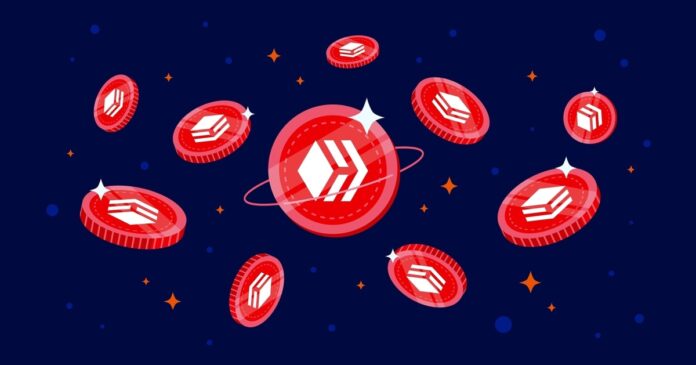Common Ethereum Layer 2 projects include Optimism, Arbitrum and zkSync. Tokens from some of these projects, such as ARB (Arbitrum) and OP (Optimism), have been available for trading. This article aims to explain the concept of Layer 2 in straightforward terms.
As blockchain technology continues to evolve, Ethereum has established itself as a leader in smart contracts and decentralized applications. However, its growing popularity has brought about challenges, particularly in terms of scalability and transaction costs. To address these issues, Layer 2 (L2) solutions were introduced, designed specifically to navigate these hurdles.
What is Layer 2 (L2)?
Layer 2, often abbreviated as L2, refers to a secondary framework or protocol built atop the existing blockchain (Layer 1 or L1). The primary objective of L2 solutions is to increase transaction throughput and reduce associated costs, all while maintaining the security and decentralization properties of the main chain.
The Basics: Layer 1 vs. Layer 2
Layer 1 (L1) is the foundational blockchain layer. Think of Ethereum or Bitcoin; these are L1 blockchains. They form the bedrock upon which L2 solutions are constructed. L1 handles the core consensus, maintains the network’s security, and records all transactions.
Layer 2 (L2), on the other hand, operates atop L1 and can process transactions off-chain or in a more scalable manner. The results are then settled back onto the main chain, ensuring the security and immutability of the primary blockchain.
The Promise of Layer 2
Lowered Transaction Costs: L2 solutions, by handling numerous transactions off-chain and consolidating them into one L1 transaction, can markedly decrease the expense of each transaction.
Improved Transaction Capacity: Compared to conventional L1 blockchains, L2 solutions are capable of processing a greater volume of transactions every second (TPS), tackling a primary concern in the world of cryptocurrency.
Maintained Security: Even though transactions might be processed off-chain, they eventually settle on the main chain, inheriting the security properties of L1.
Diving Deeper: Types of Layer 2 Solutions
1. Rollups: These are a popular L2 solution where transactions are processed off-chain and then bundled or “rolled up” into a single transaction that’s recorded on L1. There are two main types of rollups:
Optimistic Rollups: Transactions are assumed to be valid unless proven otherwise. If a transaction appears suspicious, it can be challenged and verified.
Zero-Knowledge Rollups (ZK-Rollups): These use cryptographic proofs to validate transactions off-chain. Only the proof, which is much smaller in size, is submitted to L1.
2. State Channels: These are off-chain corridors where multiple transactions can occur between participants. Once the series of transactions is complete, the final state is settled on the main chain.
3. Plasma: A framework that allows for the creation of child chains branching from the main chain. These child chains can operate independently and report back to the parent chain periodically.
Layer 2 in Action
Several projects are pioneering the L2 space:
Arbitrum: An Optimistic Rollup solution aiming to make Ethereum transactions more cost-effective.
Optimism: Another Optimistic Rollup, focusing on scaling Ethereum and enhancing its overall efficiency.
zkSync: A ZK-Rollup platform that offers a scalable, low-cost solution for Ethereum transactions.
Conclusion
Layer 2 solutions represent a promising step forward in addressing the scalability and cost issues associated with current blockchain networks. As these solutions continue to evolve and mature, they could pave the way for broader adoption of blockchain technologies and a more efficient decentralized future.
Disclaimer & Copyright Notice: The content of this article is for informational purposes only and is not intended as financial advice. Always consult with a professional before making any financial decisions. This material is the exclusive property of Blockchain.News. Unauthorized use, duplication, or distribution without express permission is prohibited. Proper credit and direction to the original content are required for any permitted use.
Image source: Shutterstock
Credit: Source link






















 Bitcoin
Bitcoin  Ethereum
Ethereum  XRP
XRP  Tether
Tether  Solana
Solana  USDC
USDC  Dogecoin
Dogecoin  Cardano
Cardano  Lido Staked Ether
Lido Staked Ether  TRON
TRON  Wrapped Bitcoin
Wrapped Bitcoin  Wrapped stETH
Wrapped stETH  Chainlink
Chainlink  Avalanche
Avalanche  Sui
Sui  Stellar
Stellar  Litecoin
Litecoin  Toncoin
Toncoin  Shiba Inu
Shiba Inu  Hedera
Hedera  LEO Token
LEO Token  USDS
USDS  Hyperliquid
Hyperliquid  Polkadot
Polkadot  WETH
WETH  MANTRA
MANTRA  Bitcoin Cash
Bitcoin Cash  Bitget Token
Bitget Token  Ethena USDe
Ethena USDe  Wrapped eETH
Wrapped eETH  Uniswap
Uniswap  Monero
Monero  NEAR Protocol
NEAR Protocol  Pepe
Pepe  WhiteBIT Coin
WhiteBIT Coin  Aave
Aave  Ondo
Ondo  Bittensor
Bittensor  Aptos
Aptos  Internet Computer
Internet Computer  Dai
Dai  Official Trump
Official Trump  Ethereum Classic
Ethereum Classic  Tokenize Xchange
Tokenize Xchange  Mantle
Mantle  OKB
OKB  Gate
Gate  sUSDS
sUSDS  Coinbase Wrapped BTC
Coinbase Wrapped BTC 
